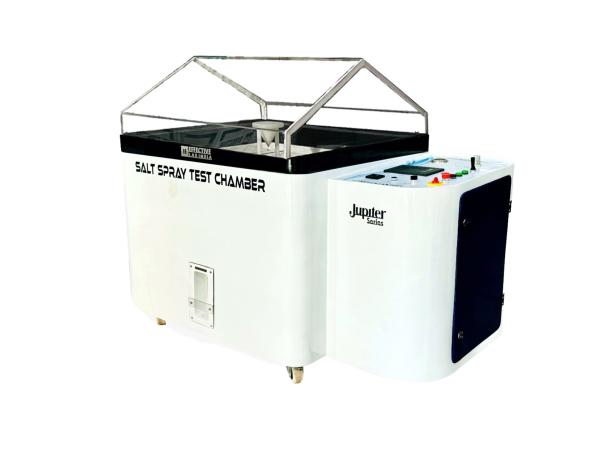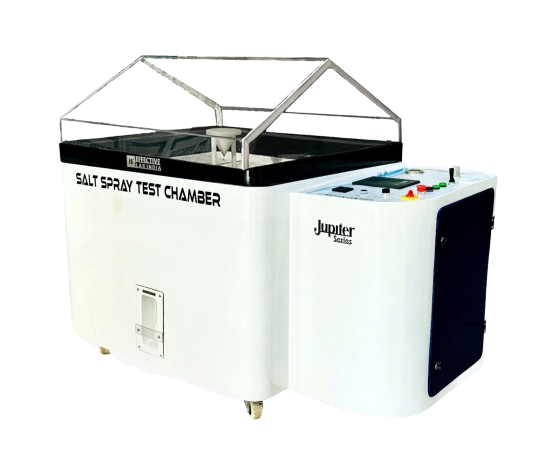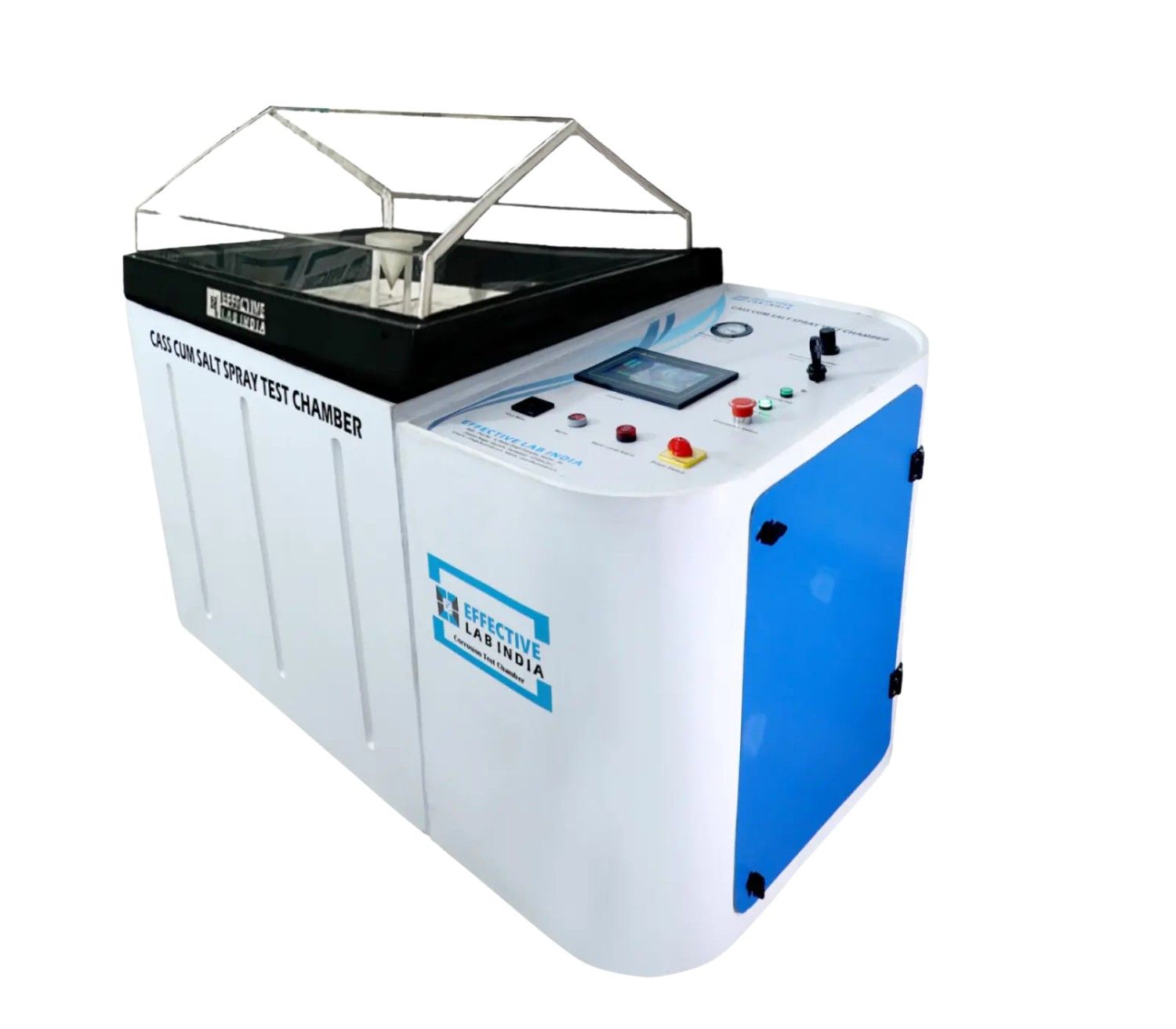Introduction
When evaluating the corrosion resistance of materials, coatings, and components exposed to salty environments, salt spray chambers are essential instruments. These chambers mimic the effects of long-term exposure to saltwater or other severe circumstances by simulating accelerated corrosion through the creation of a salt fog environment. It's extremely important that you understand how these chambers work and the parameters that control the testing procedure in order to provide correct and trustworthy results.
We'll look at the inner workings of salt spray chambers, the fundamental procedures, and the significance of each part in this extensive guide. By the end, you'll know exactly how these chambers safeguard the longevity of materials and how producers use them to evaluate resistance to corrosion.
Matériaux
Fiberglass-Reinforced Plastic (FRP)
Polypropylene (PP)
Silicone Rubber
Outils
Salt Spray Chambers utilize a variety of tools and components to ensure accurate testing and controlled environments. These tools help generate and monitor the salt fog conditions necessary for corrosion testing. Here are the essential tools and equipment used in a salt spray chamber:
1. Salt Spray Nozzle
- Purpose: Atomizes the saline solution into fine mist, creating a uniform salt fog.
- Material: Typically made from corrosion-resistant materials like polypropylene or stainless steel.
2. Air Compressor
- Purpose: Supplies the air required to atomize the saline solution through the nozzle.
- Specifications: Delivers regulated pressure to ensure consistent mist production.
3. Brine Solution Reservoir
- Purpose: Holds the saltwater solution (usually a sodium chloride mixture) that is sprayed into the chamber.
- Material: Corrosion-resistant plastics like polypropylene or fiberglass.
4. Heater/Temperature Controller
- Purpose: Maintains a constant, controlled temperature inside the chamber to meet specific test standards (commonly around 35°C for neutral salt spray tests).
- Material: Corrosion-resistant heating elements with external temperature control units.
5. Humidity Control System
- Purpose: Manages the humidity levels inside the chamber, ensuring accurate and consistent test conditions.
- Tool: A humidistat monitors and adjusts the internal humidity as required by the test standards.
6. pH Meter
- Purpose: Measures the pH of the saline solution to ensure it is within the required range for the test.
- Standard Range: Neutral salt spray tests usually require a pH range of 6.5 to 7.2.
7. Fog Collectors
- Purpose: Collects the mist at predetermined locations to measure the rate of fog deposition.
- Tool: Graduated cylinders or specially designed fog collection funnels.
8. Test Sample Holders/Racks
- Purpose: Hold and support the samples inside the chamber during testing, ensuring proper exposure to the salt fog.
- Material: Corrosion-resistant materials like plastic or non-reactive metals.
9. Timer/Programmable Controller
- Purpose: Automates test duration, cycle times, and environmental conditions.
- Function: Allows tests to run for precise periods, ensuring repeatability and adherence to test standards.
10. Pressure Regulator
- Purpose: Controls the air pressure within the chamber and the nozzle to maintain a stable spray pattern and fog density.
These tools, combined with a well-constructed salt spray chamber, help simulate harsh environments and assess the corrosion resistance of materials.
Étape 1 - Preparation
The material or product is placed inside the chamber, where it is exposed to a fine mist of saline solution (typically sodium chloride) at a specific concentration.
Étape 2 - Salt Fog Generation
The chamber uses a salt spray nozzle to atomize the saline solution, producing a continuous mist. The salt-laden air circulates evenly within the chamber.
Étape 3 - Controlled Environment
The temperature and humidity inside the chamber are carefully controlled, ensuring the test is consistent and replicable. Common test standards, such as ASTM B117, specify parameters like temperature and exposure duration.
Étape 4 - Corrosion Monitoring
The test runs for a set period, often from hours to days, depending on the desired level of corrosion simulation. The exposed materials are then examined for signs of rust, pitting, or other forms of corrosion.
Notes et références
Salt spray chambers are a vital tool for industries needing to evaluate and ensure the corrosion resistance of materials and protective coatings. The ability to simulate long-term exposure to corrosive environments in a short time frame makes them essential in various industries, such as automotive, marine, and aerospace. By mastering how these chambers work and understanding the processes involved, manufacturers can improve product quality and durability. This ensures the safety, longevity, and performance of materials in harsh environments, thereby meeting industry standards and protecting investments.
Published



 Français
Français English
English Deutsch
Deutsch Español
Español Italiano
Italiano Português
Português